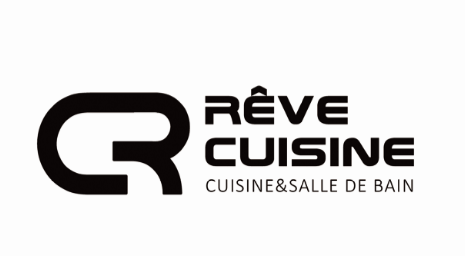
When it comes to cleaning kitchen cabinets, the task may appear to be daunting. However, with a few useful pointers, this becomes quite simple. In this article, we shall discuss the top ways of ensuring that your cabinets are always outstanding.
We have consulted the professionals for answers and these are some of the gentlest cleaning modes as well as means that one can ever come across. For those who want to remove stubborn oil or merely engage in normal tidying up, our easy procedure will make your cupboards look renewed.

When & How Often Should you Clean Your Kitchen Cabinets
The significance of tidiness in your kitchen cabinets can’t be underrated. You must wash them frequently to prevent accumulation of dust, grease and dirt. On a weekly basis, try to rub off the outer parts of the cabinets with a gentle cleaner and soft cloth. Target once every two weeks for those who are too busy.
At least once a month, clean your cabinets thoroughly. Remove everything from inside and scrub the shelves well as the doors. This is also an opportunity for you to neaten up your cupboards. When your cupboards are less crowded such as during dishwashing time is the best moment to do this.
Clean finger marks and spills off from inside shelves and cabinet doors. Use either water mixed with vinegar for a natural cleaning or a specialized cabinet cleaner when there are stubborn stains. Don’t forget that there can be plenty of germs on handles plus hardware that’s why take it seriously while washing them.
What kind of Equipments that you will need?
For an extensive cleaning up of your cooking area cabinets, you need a few vital tools and materials. Here is a list that will let you know if you are ready for the job.
Tools:
- Microfiber cleaning cloths: These are gentle on surfaces and excellent at picking up dirt and dust.
- A soft toothbrush with bristles: Old tooth brushes can clean small areas especially around handles and hinges.
- Vacuum cleaner with brush attachment (optional): This could assist to remove loose dirt inside cabinets or drawers.
- Bowls or basin: Useful for mixing cleansers as well as dipping fabrics in them.
Materials:
- Mild liquid dish soap: It acts as a mild cleaner for most cabinet surfaces
- Distilled white vinegar: A grease cutter which also acts as natural sanitizer without any steaks
- All-purpose cleaner (optional): Can be used to do quick cleaning when time runs out
- Baking soda (optional): Is perfect for removing tough stains without scratching
- Orange oil cleaner (optional): It Cleans and conditions wood cabinets while leaving behind a good citrus fragrance
- Melamine foam eraser (optional): These work great in removing scuffs and marks without using harsh chemicals
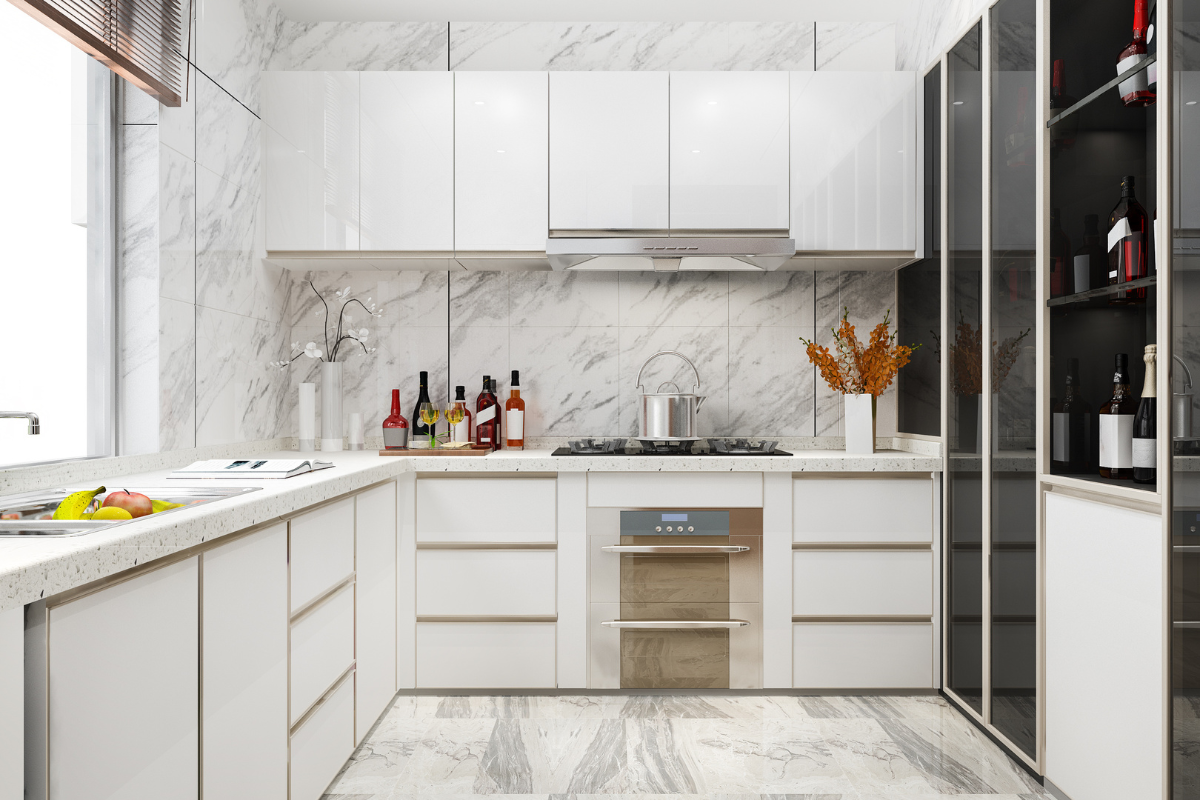
How to Clean Fingerprints from your kitchen Cabinets
The sight of smudged fingerprints on the kitchen cabinets can be incredibly irritating and give your kitchen an untidy appearance. Cleaning off these oily finger marks can be a hard task, but there is a simple way to do it.
Here’s how to keep your cupboards looking smart with minimum effort:
Step 1: Make Your Cleaning Solution
This natural cleaner effectively gets rid of greasy residues; blend equal parts distilled water and white vinegar.
Step 2: Apply the Solution
To make the solution, use a piece of microfiber cloth soaked with vinegar. It does not scratch surfaces and collects oils and dirt easily.
Step 3: Wipe Down the Cabinets
Gently wipe down the cabinet doors and handles where fingerprints are visible. All areas with fingerprints should be cleaned up, pressing somewhat harder on obstinate smears.
Step 4: Buff and Dry
Using a dry polishing cloth, polish away any remaining moisture from the surface after wiping away the fingermarks. This does away with any residual wetness that may be present while adding sparkle to your cupboards.
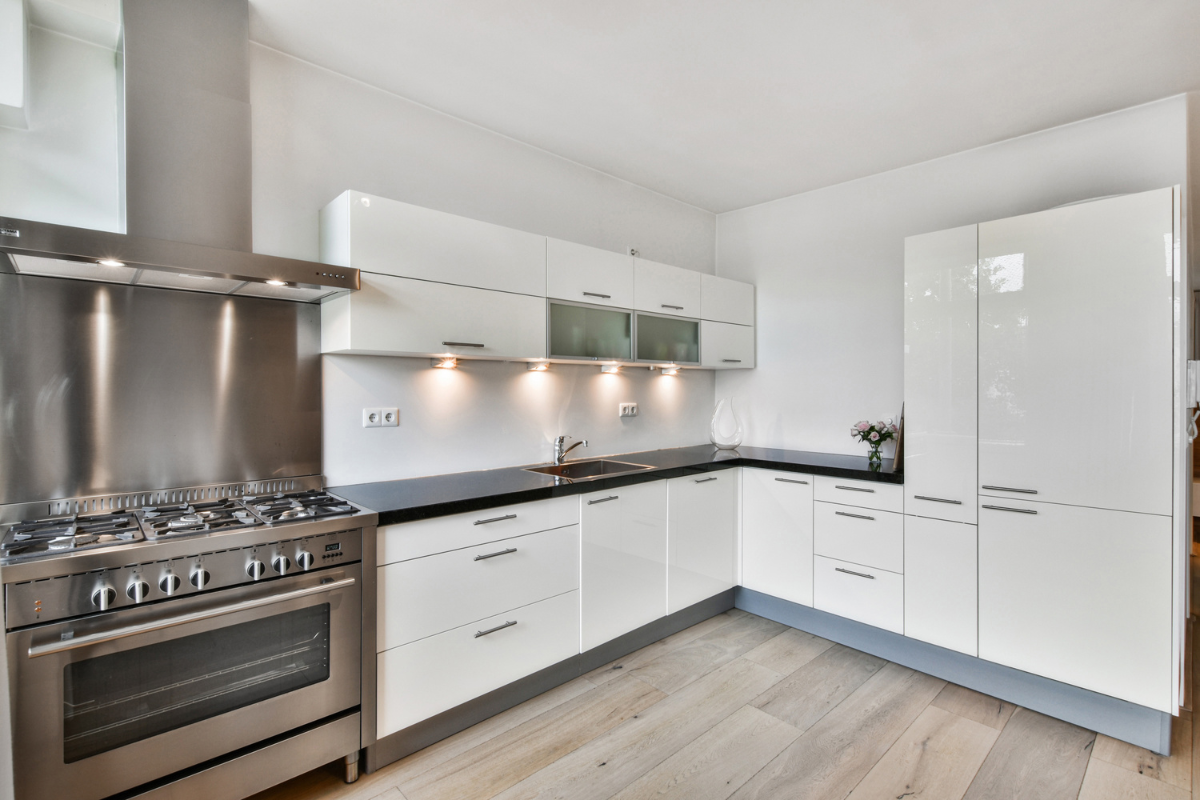
How to Clean Grease from your kitchen Cabinets
In kitchens, greasy trails are usually formed on the cabinets and this is more so for those cupboards situated over the stove. However, there are steps that can be followed to clean even the most stubborn of grease stains.
Below is what you need to know:
Step 1: Make a Cleaning Mixture
Combine equal amounts of distilled water and white vinegar. This solution is effective because it can dissolve grease but won’t ruin your cupboards.
Step 2: Use the Solution
Get a microfiber cloth and saturate it with vinegar mixture. Microfiber cloths are best suited for cleaning purposes since they are soft and springy hence capable of removing all slathered fat.
Step 3: Wipe off Greasy Spots
Gently press your wet cloth against greasy spots which will cause them to lift away normally, these are cabinets above stoves that often receive high levels of oil.
Step 4: Flush then Repeat
If it fails to work, rinse cloth and soak again in vinegar solution before wiping cabinet. You might have to repeat this process many times until all the oil has been eradicated.
How to Clean Food splatters from your kitchen Cabinets
Food splatters and grease can make kitchen cabinets dirty quickly, especially those situated next to the stove. Therefore, it is essential that one cleans up immediately to maintain their cleanliness and appearance.
To ensure the cleanliness of your cabinets;
Step 1: Quick Response
When a sauce spills or a splash lands on them; such as soda or sauce, just take a damp towel and gently rub the dirt away. This is particularly important for wooden cupboards which are liable to absorbing stains at a very high rate.
Step 2: Use baking powder
For stubborn spots, prepare some paste by mixing baking soda with water. Apply this paste in the affected area before allowing it to rest there for some minutes. Then wipe using clean cloth hence making it spotless.
Step 3: Eliminating grease
The vinegar’s acidity makes it easy for reducing fats without harming the surface of the cupboard. Make a mixture of an equal amount of white vinegar and distilled water and you will manage to cut through fat.
Step 4: Soft Scrubbing
Take the microfiber fabric into the solution containing vinegar then softly scrub through greasy areas. The microfiber cloth is gentle enough not to cause scratches but heavy-duty for removing oil especially in areas above cookers.
Step 5: Rinse and Dry
If the grease doesn’t come off right away, rinse the cloth; soak it in the solution again, and scrub the cabinets. You might need to do this a few times, but it will work eventually.
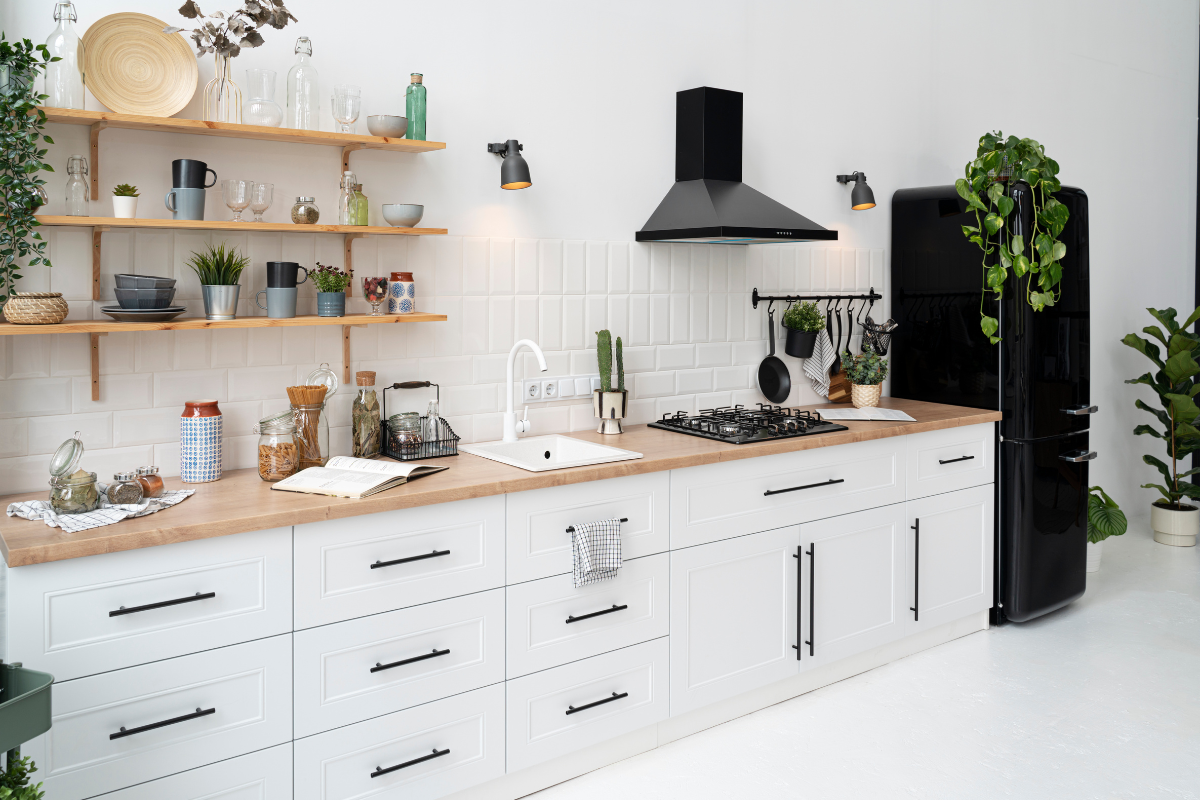
How to Clean Hard Water stains from your kitchen Cabinets
Especially on cabinets in kitchens, hard water stains may pose a problem. These residues are caused by minerals contained in the water.
Here’s how to get rid of them and keep your cabinets looking great:
Step 1: It all trickles back to prevention
Water stains are hard to clean and should be prevented. Use distilled water instead of other forms when you are cleaning your cupboards because it does not leave mineral deposits behind that cause stain.
Step 2 Find The Stains
They will manifest as cloudy or white spots on your cabinets which is very common with hard water stains.
Step 3 Vinegar Solution
You can dissolve mineral deposits without damaging cabinet finish by mixing equal parts of white vinegar with distilled water. Vinegar dissolves minerals, but does not harm the finish on the cabinet.
Step 4 Soft Cloth Application
Use a cloth dampened with vinegar solution to softly rub the stained areas. With a soft cloth, you can clean off any dirt without scratching the cabinet surface.
Step 5 Rinse with Distilled Water
Wipe off any remaining vinegar and dissolved minerals with distilled water after using vinegar solution.
Step 6 Dry Thoroughly
Dry the cupboards using dry clean cloth. This is crucial since leaving water droplets might cause more stains on the woodwork.
How to Clean Scuffs from your kitchen Cabinets
Cabinet scars can spoil your cooking area. Such marks are usually caused by footwear, furniture and day to day living. They might be gotten rid of if they get treated right.
Step 1: Mild Erasure
Start by using a mild eraser. Slowly move it in circles over the scuff mark. It works well with most cabinets and does no harm.
Step 2: Remove Residues Left Behind
After erasing, use dry cloth to wipe away any remaining rubber residues that may have been left on the surface behind during this process so that additional dirt will not be attracted to these particles.
Step 3: Clean That Surface
Take some warm water and mix it together with mild soap in a basin or bucket until the latter has completely dissolved. Squeeze off excess water from the piece of fabric you soaked into this mixture so that it becomes barely wet enough for wiping out any other dirt on that spot and then rinse afterwards.
Step 4: Dry Off The Surface
Right after cleaning processes are completed, pick another dry towel to instantly wipe off all other areas preventing water spots from forming as well as maintaining its face entirely clean throughout its layers.
How to Clean Glass Cabinets
Glass-fronted cabinets can be added to any kitchen to make it look smart; however, they require frequent cleaning because they show every fingerprint and smudge. It is important to be very careful while cleaning these cabinet materials such as metal, wood or laminate and glass so as to avoid damaging them.
To achieve the best results, follow these steps:
Step 1: Pick an Appropriate Cleanser
The cleanser for cabinets should be gentle enough on both glass and frame material of the same cabinet. The glass must never have any oily residue or streaks left that are hard to remove.
Step 2: Polish Glass Panes
When spraying your window pane use a spray bottle with a soft cloth instead of directly spraying it onto the glass which may scatter onto the wooden or laminate floors. Wipe off finger prints gently from glasses among other dirt marks.
Step 3: Clean Inner Panes
Once you open up cabinet doors wash inner surfaces of glazed panes. This approach ensures that no personnel working over large areas miss out on any regions.
Step 4: Dust Frames
Another wet cloth can be used to clean the frame around front part of your glass door. For wooden frames, ensure proper maintenance procedure is followed so that its quality does not deteriorate according to manufacturer.
Step 5: Dry and Polish
wipe the glass and frame with a dry microfiber cloth after cleaning so as to give an overall appealing appearance of these things.
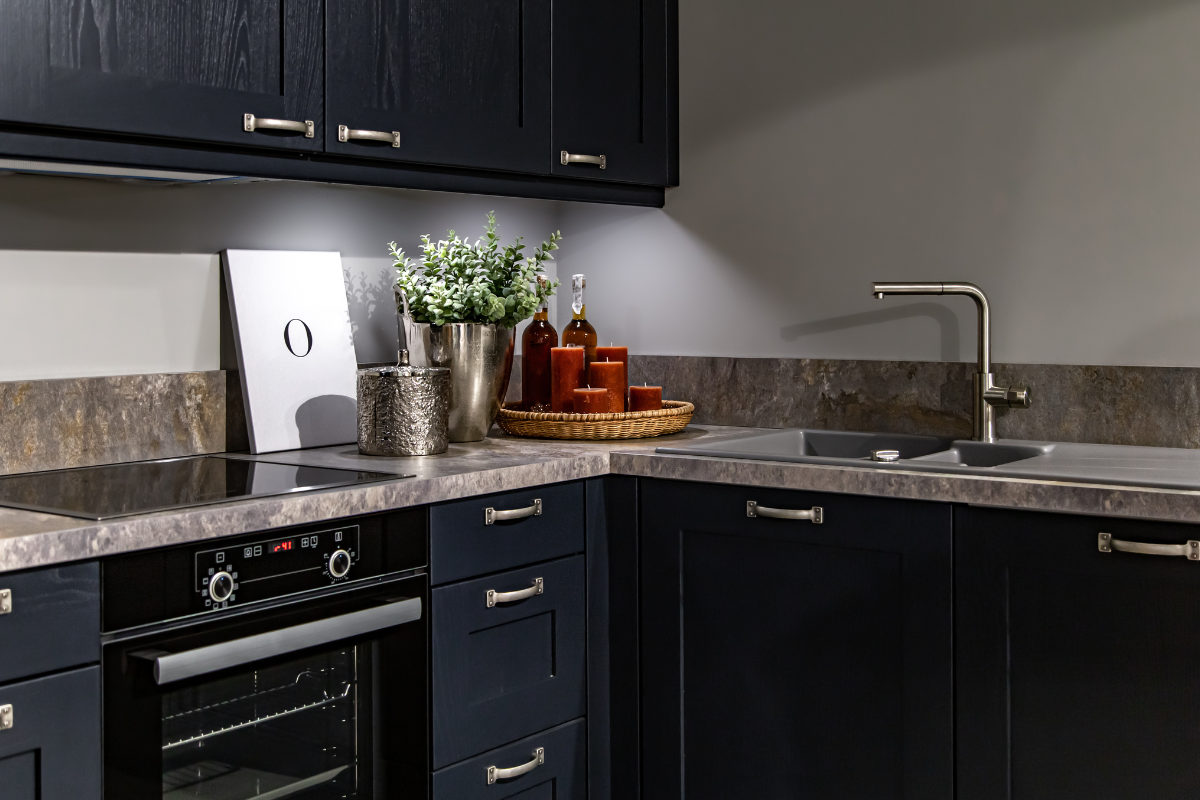
How to Clean Cabinets that Made by Wood?
Wooden kitchen cabinets bring warmth and character to your home but require special attention to keep them looking their best. The type of finish on wood cabinets call for a mild approach.
Here’s an elaborate guide to taking care of your wood cabinets:
Step 1: Proper Cleaning Agent
You can use mild oil soaps such as Murphy Oil Soap that are made for cleaning and polishing wood without causing harm. With the help of this cleaner, they would be restored back to freshness.
Step 2: Using the Right Cloth
When washing, always dip a cloth in water before using it in order not to wet the wood excessively- which may damage it .Clean dirtiness gently from reaches of the closet .
Step 3: Buffing and Polishing
Afterwards, take a piece of dry microfiber cloth and rub down the wooden surface. Always go with the grain so as to enhance natural patterns of the timber whilst ensuring none scratches come up.
Step 4: Extra High Moisture Areas Care
Cabinets above or near stoves need extra care. These cupboards always get exposed to steam and condensation hence applying an additional layer of sealant would prevent moisture damages.
How to Clean Laminate Cabinets
Laminate cabinets are in high demand because they can serve you for a long time and do not need much attention. All you have to do is follow our lead:
Step 1: How to clean them regularly
Start by wiping the surface with an all-purpose cleaning wipe or diluted vinegar solution. This should take care of dirt and grime accumulated through everyday use. The cloth must be used to wipe up water marks after drying.
Step 2: Removing Stains
For stubborn stains, make a paste using baking soda and water. Spread it on the stain and leave it for a couple of minutes. Baking soda’s gentle abrasiveness is able to remove stains without compromising the laminate finish.
Step 3: Mild Scrubbing
If there are more stubborn stains, scrub gently with a sponge or soft cloth dampened in the baking soda mixture. Avoid using abrasive pads as they can damage or dull the laminate surface.
Step 4: Eliminating Scuffs
Sometimes lower cabinets get scuffed up easily. To get rid of these marks, simply rub gently with an eraser until they vanish from sight. This method is safe for any laminate surface.
Final Verdicts
It is not demanding to clean your kitchen cabinets if you know how to do it. Frequently wipe your cabinets using mild detergents to avoid accumulation. However, for more stubborn stains and scuffs, try out other methods such as baking soda paste or vinegar solutions.
Remember that different materials require different handling thus test the cleaning agents on a small patch before proceeding with the rest. The essential tools needed are; microfiber cloths, soft brushes, and appropriate cleaners.
For more information, feel free to contact to our Revecuisine kitchen expert by contacting us
So let’s go ahead and clean!


